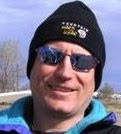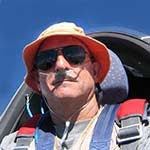Alby's Progress
Map Legend
___ Attempts
___ Proposed legs
___ Trip "by glider" to NY
Click, hold and move the mouse to move the map.
Point hand's finger, click on markers to read airport information.
Point hand's finger, click on path legs to read flight information.
Click on Sat (bottom left) to see aerial picture, enlarge to see airport.
Click on "View Larger Map" above to see full screen .
latest news
9/14/2015 - Alby arrives at First Flight, Kitty Hawk, NC!
Heartfelt congratulations to Alby pilot Eric Lambert, who found reliable lift on a blue day to get Alby safely to Kitty Hawk, for a well-deserved rest. Eric's notes on the flight are found in more detail below.
Briefly, he said, "I will return to First Flight in the morning and plan to meet with Karen Warlitner, the Executive Director of the First Flight Foundation, for a photo-op. We would like to have a photo of Alby next to the Wright Flyer. On Thursday and through the weekend, we hope to take advantage of this spell of good weather to fly Alby north."
8/31/2015 - Alby flew Sunday from Chesapeake, VA to Currituck , NC with Albypilot Eric Lambert in his motorized Grob 103.
Eric said that he found clouds to 5,000’ and lift up to 4 knots. He got low (1,700’) at the Academia facility (U.S. Training Center) but got back up to 4,000’ and then to Currituck. He said it was not difficult – sure I believe it, when the conditions are good! The flight of 25 miles required only two thermals, but it was one of the very few days that there were clouds and workable lift and no adverse winds. Clouds and lift disappeared soon after the landing.
Eric wants to spend four days of the long Labor Day weekend trying to fly with Alby the 33 miles from Currituck to First Flight Airport, a place that is so historically important for all aviators. Not an easy thing to do since near the coast the weather is not favorable to soaring in general, and in this case in particular the glider has to fly for several miles directly above water.
TALES OF THE FLIGHTS
Alby flight No. 9 - Mario Crosina, 3/28/09
I took off at 12:46 and took a 2000' tow then climbed to 4600' msl in my 1st thermal and by this time Steve was at 7000'. The day looked very promising. I headed out toward the southeast, a little to the right of the course line at 1:08 with an altitude of 5900'. I wanted to check how the air was between the mountains and the valley. I found a thermal and went up to 5800'. And while cruising my netto showed we where in a convergence. Things were looking good and the forecast seemed to be right on.
When I found my next thermal I was going to turn toward the east and head for Tehachapi but I continued sinking and found nothing until I was down to 2000' agl with Belridge off to the west. Here I climbed slowly back up to almost 3900' msl. This was beginning to feel like a day when you are in this area where you have to stretch your glide to get away from the green fields and make it to the barren dry areas near Elk Hills. Once you make it past the fields below you head for Elk Hills for about 10 miles going SE keeping your left wing looking at green fields and the right one looking at barren dry ground. Usually you will find a shear line, and if not, at least a thermal along this line. About 3 miles out I again was down to 2000' agl until I found a thermal and slowly climbed back to about 4500' msl.
The mountains 30 miles off to the S and E looked terrible and I decided to continue going SE to Buena Vista, a man-made lake about 3.5 miles long with a combination of bare hard ground to N and cultivated fields to the S and E. Again, a shear is usually lurking here somewhere even on the weakest of days. I arrived at about 2300' agl and the shear got us back to 4000' msl.
We now headed E and glided about 6 miles to I-5 Freeway getting down 2500' agl. None of the fields gave any sign of lift and so I turned SE and flew down the freeway slowly losing altitude for about 4 miles until I finally caught a thermal where we crawled back to 2300' agl. While climbing I had noticed some small dust devils close together about 2 miles to the SW and went for them. They got me back up to 2700' agl.
I then headed W again toward the 99 Freeway 4 miles away and climbed in a thermal to 3200 agl along the way. At the 99 we only found a little bump so we continued on. At this time the air felt less buoyant. Looking at the NAM forecast after the flight it shows here is where I would be going into an area of reduced lift. (I will have more respect in the future for NAM) I glided down going to the ENE 10 miles toward the town of Arvin and landed there at the J and J Crop Duster strip at 3:27.
I looked at Bear Mountain looming down on me to the east with Tehachapi hidden behind it. I was 20 miles short, and I will have to try again. Over the years it has always been a great adventure trying to reach this goal. It is indeed possible. The 1st time was in my Blanik when I thought anything was possible, then the Nugget and the ASW20 when I knew better.
The crew at J and J were very friendly and hospitable, and I could not had made this attempt without the assistance of my crew, Don Van Wyk, who gave up a day of flying at Avenal where they were topping out at 8300' msl.
Mario
View Flight on OLC
Alby flight No. 8 and Pin No. 4 - Jonathan Hughes, 3/22/09
 Alby enjoyed his stay at Hollister but he was getting restless and wanted to get going on his journey to the east. Alby wanted to get to Avenal and I offered to give him a ride in my glider. He has enjoyed flying around in a Discus, ASW-27, and DG
Alby enjoyed his stay at Hollister but he was getting restless and wanted to get going on his journey to the east. Alby wanted to get to Avenal and I offered to give him a ride in my glider. He has enjoyed flying around in a Discus, ASW-27, and DG -800 so he was looking forward to seeing what it is like to fly in an Jantar. He wanted to go last weekend but the high cirrus made that impossible. This Sunday was looking promising and with the rain coming in on Saturday evening it was looking like a good post-frontal day.
-800 so he was looking forward to seeing what it is like to fly in an Jantar. He wanted to go last weekend but the high cirrus made that impossible. This Sunday was looking promising and with the rain coming in on Saturday evening it was looking like a good post-frontal day.I got a late start on Sunday and didn't get to Hollister until a little after 11:00AM just in time to see BG take off. I quickly collected Alby from the HGC office and tucked him snuggly into his traveling case. I have been working on various little projects on my glider for the past several weeks so it took me a little time to make sure everything was back together and ready to go before taking off (more about that later). In the meantime, a rain shower had moved in from the north which delayed us even more.
I finally took off about 1:30PM and took a 3,700ft AGL tow to Kelly's Ranch airstrip 4.5nm northeast of Hollister which was the closest thermal. The rules for Alby state that you should release below 3,000ft and to the west of the airport when Alby is flying east. I cla
 rified with the Albymasters that the conditions in Hollister would probably require special dispensation and received a waiver from the tow height and release rules for my flight. Alby said he felt our flight met the spirit of the rule as we released as low and close to Hollister as possible on the day we flew.
rified with the Albymasters that the conditions in Hollister would probably require special dispensation and received a waiver from the tow height and release rules for my flight. Alby said he felt our flight met the spirit of the rule as we released as low and close to Hollister as possible on the day we flew.Conditions were soft at first and the wind was blowing from 305 at 21kts. I was able to climb up to about 5,000ft before heading out towards Los Banos. I was finding lots of sink in some areas and not being very high I was a little worried about how easy this flight was going to be. Alby said not to worry and found a few thermals when we got low. Every time I found myself in a position where I either needed to climb or head towards my landout option Alby found a thermal.
It was about at this time that I noticed that the arrival altitude for my landout option on my PDA was changing but the distance didn't seem to change. I also noted that the direction of flight seemed to be in the wrong direction. A little bit of troubleshooting revealed that the logger was communicating with the PDA but the logger thought we hadn't moved from just south of the San Luis Reservoir. Alby said not to worry, we could complete the flight using ded reckoning and since I always have a sectional with me we didn't have any trouble figuring out where we were.
Our route of flight was from Kelly's Ranch to the north east towards Los Banos and then south towards I5. Conditions got stronger as we got closer to Mercy Hot Springs and by the time we made it to Harris Ranch I knew we had Avenal in glide. The problem was a line of rain showers that stretched from San Benito peak past Coalinga to the foothills east of Avenal. I was fairly sure we could get through but I couldn't see the runway and wasn't sure what the condition of the surface would be after all the rain.
As we appro
 ached from the east it became obvious that the rain was more to the south and the airport was in the clear. I flew a little past Avenal to show Alby the direction he would want to go later before landing at Avenal about 3:35PM. Ironically, with all the wind at altitude the winds at Avenal were light when I landed but picked up later in the day by the time I towed out.
ached from the east it became obvious that the rain was more to the south and the airport was in the clear. I flew a little past Avenal to show Alby the direction he would want to go later before landing at Avenal about 3:35PM. Ironically, with all the wind at altitude the winds at Avenal were light when I landed but picked up later in the day by the time I towed out.No one appeared to be around when I landed and I was a little concerned about leaving Alby alone but Loyal Savaria showed up a little while later and gladly accepted Alby on behalf of the Avenal club. A little later, a member of the Avenal city council showed up and gave Alby
 an official welcome.
an official welcome.Although Alby and I only got to fly together for 2.1 hours we had a good time and I'm looking forward to following his journey as he makes his way across the country. I don't have a logger trace for the flight but the route was right over I5 most of the way. I got as high as 7,000ft and as low as 3,600. Winds were strong from the north but there was no wave found.
Jonathan "UV"
(and Alby)
See Flight on youtube http://www.youtube.com/watch?v=dkYWrTao3T4
Alby flight No. 7 and Pin No. 3 - Buzz Graves, 3/5/09
 e for time off from work 3 days in advance, I made the call and placed my bet. It had been raining off and on for nearly a week when the first break was showing on the satellite images. The day started off looking quite good as cu’s were forming of the mountains very early, say around 10 am. There was plenty of blue sky from my view in the South Bay as I left my home with my glider in tow. My drive is around 1.5 hours and I was studying the sky intensely all the way to the airport, that is until I drove over Altamont Pass again and found the central valley socked in again, nearly the same start point as my previous attempt a few weeks earlier. Rather than panic, it was early enough to stop for breakfast and get a window seat to watch the sky, while wishing and hoping filled my thoughts. But while getting myself ready to drive back home I noticed it was improving. In another direction from my window I was seeing blue sky dotted by small cu’s, albeit with very low cloud bases, maybe 1500’ AGL.
e for time off from work 3 days in advance, I made the call and placed my bet. It had been raining off and on for nearly a week when the first break was showing on the satellite images. The day started off looking quite good as cu’s were forming of the mountains very early, say around 10 am. There was plenty of blue sky from my view in the South Bay as I left my home with my glider in tow. My drive is around 1.5 hours and I was studying the sky intensely all the way to the airport, that is until I drove over Altamont Pass again and found the central valley socked in again, nearly the same start point as my previous attempt a few weeks earlier. Rather than panic, it was early enough to stop for breakfast and get a window seat to watch the sky, while wishing and hoping filled my thoughts. But while getting myself ready to drive back home I noticed it was improving. In another direction from my window I was seeing blue sky dotted by small cu’s, albeit with very low cloud bases, maybe 1500’ AGL.As I rigged things kept looking better with cloud bases rising, it was looking like a certain thing that I would be sharing the skies and experience with Alby. Forecast was for better conditions to the south and I knew that the early going was going to be a ground skimming experience with cloud bases around 2500 AGL. Normally I would have worked towards the mountains where the cloud bases are much higher with better lift, but by the time I launched it had over developed and the clouds were sitting on top of the peaks with no room for Alby, me and my glider. So off I went south down I-5 following a string of airports that I kept clicking off every 10-15 miles. It was a day to fly very conservatively, one wrong step and we were going to be landing out. For the first 30 miles we rarely got over 2500 AGL.
In order to make it to Hollister I needed to climb over the mountains to get to Hollister from the central valley. On the first attempt I didn’t connect and retreated, on the second attempt I connected with a climb to over 4k with good lift being marked by clouds towards Hollist
 er. The only challenge at that point was to dodge the columns of rain and hail that where falling from some very dark cumulus clouds that were very serious looking. Alby and I got a little wet on the way and landed in bright sunshine at Hollister. We were greeted by the local glider pilots and congratulated on our flight, a little surprised that I appeared out of that darkened sky to the east. I made the introduction and now Alby is their guest until he gets help from those at Hollister. I believe his next destination is Avenal in the central valley of California.
er. The only challenge at that point was to dodge the columns of rain and hail that where falling from some very dark cumulus clouds that were very serious looking. Alby and I got a little wet on the way and landed in bright sunshine at Hollister. We were greeted by the local glider pilots and congratulated on our flight, a little surprised that I appeared out of that darkened sky to the east. I made the introduction and now Alby is their guest until he gets help from those at Hollister. I believe his next destination is Avenal in the central valley of California. Alby flight No. 6 - Buzz Graves, 2/18/09
The drive to the field some 60 miles away from my home in Los Gatos was looking optimistic with cu’s forming over the range of mountain that normally offer good lift in the direction of Hollister, Alby’s next destination on his way across the country. However, about 10 miles from Byron airport I crossed over Altamont Pass dropping me in the central valley and it was completely socked in with fog, and it was around 10 am. Optimism still was there as I knew the fog would likely burn off as it normally does, we just don’t know when. The clock was ticking and the upper cirrus was coming my way.
I rigged and waited while the sky was clearing and small cu’s were forming. Cloud base was not much above 2.5k agl near the airport and looked better to the south in the direction of Hollister. So off I went in a dead glide in the direction of the clouds and got a low save over Tracy. Still seeing better clouds to the south I pressed on. Alby was getting a close-up view of the traffic moving down I-5. Winds were showing some southeasterly direction and that had me ridge soaring the low hills just west of I-5.
Several saves with hawks marking the lift along the way, this showed to Alby other flyers who have learned to harness the energy in the atmosphere. I was showing Alby all my skills accumulated over the 28 years of flying gliders in southern Arizona and ridge flying in Hawaii for 12 years. To the south I could see that the clouds were much better and pressed on. My progress was going to be too slow as I watched the cirrus move in from the west and shut down the source of all our energy in the atmosphere, the sun. Those clouds with flat bottoms and white tops turned grey and soft and I knew the attempt was over and headed back to return Alby to Byron for another attempt on another day.
P.S. As luck would have it the next three days the weather gods came together and each looked good enough for an attempt. It is the reality’s of life that many things control what we do with our time, and my time was needed else where. Alby would have to wait for another day for me to try again.
View Flight on OLC
The flight of the Albatross across our Country caught the attention and the fantasy of a newsmaker, Adam Breen, who published a well written and inspired article in Hollister's "The Pinnacle" newspaper: www.pinnaclenews.com/news/contentview.asp?c=255106
Alby's Story
Alby is a Laysan Albatross. He was born and raised in the Midway Islands, not far from the very same Laysan Island that gives names to all the individuals of his species. His parents fed him for six months. They alternated trips of one or two weeks, during which one of them was feeding and the other was protecting Alby and the nest. The long intervals were necessary because often the food was very far away, up to 400 or 600 miles away. They fed him until he became as big as them, and then suddenly deserted him. They did that because they instinctively knew that he was developed enough to take care of himself from then on. And they could not spend all their energies in raising a chick. Although they can live 40 to 60 years, they can only raise a chick every couple of years.
The young albatross did not know all the tricks of life at sea, and the first year he had difficulties at times. One half of the fledglings do not make it through the first season, but Alby did, and everything was much easier after that. He went out on the open ocean and did not come back for years, not touching land at all, living off the bounty of the ocean, sleeping on it, learning to travel using the wind forcing the air up against the moving ridges formed by the waves.
Alby came back to his native island when he was three years old, because his biological clock was giving him the urge to look for a mate. His tentative dances with prospective mates were as clumsy as those of the other young albatrosses around him. Naturally nothing happened, but he experienced and practiced the ways of the elders.
He is 4 years old now. He has wandered the ocean all this time. He has gone through the vast expanses of water finding food, freedom, and safety. He has gone to the north Pacific and flown around the Aleutian Islands and the Gulf of Alaska and the fiords of British Columbia. Next year he will try again to go back to his birthplace to search for a mate, and probably will find one.
Albatrosses are at home in the open ocean, keeping at least 30 miles offshore. But Alby is different. He is curious about the land, just as curious as a young soul can be. In his voyages near the northern seashores he watched eagles fishing for salmons. That was not his preferred food, but he looked with interest at this different method of fishing. He communicated with the eagles, answering their whistles with his screeches.
He is fascinated by the land, but unable to penetrate it - he is used to mastering the wind over the waves, and the different way of flying inland is unfamiliar to him. He asked Eagle about the extent of the land, and Eagle said that there is land up to the summit of those far away mountains to the east, and more.
One day he met Pelican, and while they were floating and chatting over the gentle waves of a mild afternoon he learned that Pelican had actually been inland while flying with his flock. He had flown across the fertile valley of California, and over the magnificent mountains of the Sierra Nevada and farther more to the northeast. Alby learned that inside the land, beyond those far away mountains, there is a great lake, and peaks with snow, and forests and valleys, and towns and people.
Pelican described the beauty of the land, which is called America, according to what he heard when people talked about it. Being a sociable character, when he was inside the land Pelican also had contacted other big birds and knew a good deal about what lay farther inside that large country.
Pelican learned from the other birds that there are large deserts and arid mountains in the interior highlands. There are very few people in those deserts, few roads, few machines. Nature is mostly untouched by man there, with many animals running free. The air is not disturbed by artificial smells and mechanical noises. It takes many days of overflying this natural environment before reaching the majestic mountains of the Continental Divide. Here the land is green again with large forests. Snow may remain up to late summer, the rocks are harsh and austere.
From there one can overfly the vast farmlands that gradually decrease in elevation until they make room for the mighty rivers that cut the America land in two. Pelican had also contacted seagulls that told him about more land to cross going east, with plenty of houses and towns and people. There are cities sporting very high buildings that tower up toward the sky. There are rivers and lakes where an aquatic bird can feed. He heard tales from vultures and hawks that there is another long range of lower mountains and beyond that, couple of days away as the crow flies, there is ocean again.
Alby would like to go inland, see the beauty of the country, but he is not fit to go there. He does not know how to master the thermals the way eagles, pelicans and other birds with big wings travel there. He is made for the ocean.
Still he would like to go and try to cross this enormous island that he cannot cross, and get to the sea on the other side.
One day he flies along the shore, and sees some very big wings flying along the cliffs of the big town called San Francisco, as he understands people call this place.
Approaching those big wings, he realizes that there are people hanging on them. He discovers then that people cannot fly on their own, but have created artificial wings that support them. He knows what they are doing; he knows how to fly along the cliffs. He knows that, ‘cause such was the very kind of flight he took when he left his nest for the first time.
Soon those cliffs become a favorite place for Alby. He flies there often and so close to the flying people that learns many of the words they speak. He listens and learns that there are even bigger and faster flying machines with long wings for the people that like to fly like birds, which are called gliders or sailplanes. And there are flying crafts with propelling engines, capable of transporting many people at high speed. He understands now what are those enormously high flying machines that cross the ocean, so high that he barely can hear their sound through the whistle of the wind.
The flying people are impressed by the unusual behavior of this albatross, which so often flies with them instead of flying far away in the ocean like others members of the same species. They imagine that Alby wants to travel ashore, but does not trust doing it by himself.
The soaring people offer to take Alby inland, and to show him the beauty of the countryside. They offer to take him aboard their flying machines and let him cross this big island in silent winged crafts, no noises, no vibrations, no offending gas smells.
Alby accepts the invitation. He wants to see the mountains, the valleys, the lakes, the deserts and the forests, and the towns and the towers, and the roads and the bridges and the rivers of this beautiful land called America. He realizes that it is not possible for him to travel here alone, without the help of the flying people.
So the soaring people take Alby in their silent aircrafts across that vast territory. They understand. Because they themselves share the curiosity, the need for adventure, the thirst for knowledge of that young spirit. They share the independence that flying gives, the endless autonomous decisions that need to be taken in this constantly moving environment. They know the far-reaching view that this privileged position allows. But most of all, they share the elation of infinite freedom by being immersed in the sky, floating, suspended in the brilliance of this transparent ocean. Those are the reasons why they aimed for the skies, and now they cannot live any more without the magic of flight.
They take Alby with them, in the togetherness that unites all aviators. Alby’s great voyage has just begun.
Rules
ORGANIZATION OF THE VOYAGE
This website is recording the flights of Alby, his whereabouts and his flight log. The webmaster of the site is the Albymaster. All news and inquiries about Alby will be handled by this site.
Alby wishes to soar across America. He wishes to see it all, from the Pacific Ocean to the Atlantic, and then resume his wandering life across the seas.
Alby flies only in aircraft that use the energy contained in the atmosphere as a means for traveling. Motorgliders can use their engine only for taking off.
A proposal to fly with Alby shall be sent to the Albymaster. A proposal shall include a pre-declaration of the proposed flight.
Preference will be given, in order, to the site that is closer to Alby’s current location, to the first proponent in order of time, to soaring clubs or associations, to groups of pilots, or to an individual pilot. This means, for example, that an individual pilot has to wait for the soaring club to fail its attempt, before making its own attempt.
A club or pilot that has proposed to fly with Alby and has been accepted by the Albymaster, will be called the Albypilot. When a proposal is accepted, the flight should be made before the end of the next Friday.
If no other Albypilots have made the flight on their assigned week, the hosting club or pilot will have the right to make the flight before the end of the next Friday. If the host did not propose or is not able to make the flight, the next Albypilot shall make the flight before the end of the next Friday. And so on.
RULES FOR THE FLIGHT
Gliders can be towed to an altitude not exceeding 3,000’above take-off. Motorgliders will shut off their engine before that altitude is reached. The release or engine shut-off point shall be west of the take off field.
Each landing point will be to the east of the take-off point. If difficulties arise, an occasional back leg may happen, when accepted by the Albymaster.
The flight should end in a soaring site, or a place from where a glider can be towed out. If the flight does not end in the pre-declared location, the Albypilot or a pilot of the same club still have to the end of the next Friday to try and complete the flight as declared. If the pre-declared location still is not reached, Alby must be taken back where it started (not necessarily by flying).
Both the current host of Alby and the new host shall communicate the outcome of the flight to the Albymaster.
If the flight cannot be made before the end of the next Friday by the first Albypilot, it is the responsibility of the first Albypilot to give notice of the inability to make the flight, with timely courtesy, to the Albymaster, to the host, and to the second proponent in line.
The Albypilot who flies with Alby is responsible for keeping good care of him. When the Albypilot represents a soaring club or association, the representative of the club or association will be responsible for the well being of Alby.
The above rules may be superseded by the Albymaster when atypical circumstances arise.
Order of Preferences:
1 - The club that is closer to Alby’s current location
2 - The club that proposes first in order of time
3 - Clubs, soaring associations, soaring centers
4 - Group of pilots
5 - Individual pilots
ACCESSORY RULES
When start altitude, release to the west, landing to the east are difficult because of special local conditions, an exception may be requested to the Albymaster.
When an Albypilot cannot make the flight in the week he/she has been assigned, another Albypilot can make the flight provided he/she has been accepted by the Albymaster.
LOGBOOK, LAPEL PINS, SPOT DEVICE, GPS TRACE
LOGBOOK - Alby travels with a logbook. The Albypilot will fill out the log entry and sign it. The flight data will be e-mailed to the Albymaster and an entry will be placed in the website logbook. A description of the flight and pictures may also be sent along with the flight data, to be posted in the website. Enter all flights, successfull or not.
LAPEL PINS - The Alby case contains lapel pins. The pilot(s) successfully accomplishing a flight will get one pin each. The lapel pins are numbered. Check in the log book for the last pin number and take the subsequently numbered pin(s). If the flight is not successfull, place a bar in the last column (Pin No.). Please guard carefully the pins, we do not want them to misteriously disappear.
SPOT DEVICE - The SPOT device is to be placed in the glider in a place where there is sufficient visual contact with the outside (inside a shirt pocket is OK). It is to be used during the flight and placed in Alby's case when not flying. Instructions for use are in the case.
GPS TRACE - Pilots are encouraged to send their GPS log no matter how successfull the flight, as it will be posted in the map (flying with Alby is already a great success, to be recorded and displayed). Alternatively, it can be downloaded to OLC.
DISCLAIMER
Pilots who participate in Alby’s voyage acknowledge that it is a voluntary effort, and that the timing, route selection, weather decisions, and all other aspects of the flight are the sole responsibility of the pilot in command of the aircraft in which Alby is transported. The Organizers of Alby’s voyage, retain all rights to the concept, images, logbook, Alby trophy, and eventual chronicle of the journey, but neither they nor volunteers involved in the project nor the Pacific Soaring Council (PASCO) nor the Soaring Society of America (SSA) are in any way responsible for the decisions of the pilots that carry Alby in their aircraft. When pilots propose to carry Alby on part of his journey, they warrant that they have sufficient experience and will exercise all due caution to ensure the safety of their flights. By allowing pilots to carry Alby, the Organizers of the Alby project are merely keeping track of and attempting to facilitate the continued progress of Alby’s voyage.
WAIVER AND ASSUMPTION OF LIABILITY
Please accept me as a participant in the Alby voyage. In consideration of acceptance of this entry, for myself, my heirs, executors, administrators, personal representatives, successors or assigns I hereby release and discharge the Organizers, The Pacific Soaring Council (PASCO) THE SOARING SOCIETY OF AMERICA, INC., and their agents, representatives, employees, successors or assigns from any and all claims for damages or injuries suffered by me or by any member of my crew during the aforementioned soaring venture.
I further agree to assume full responsibility for and to indemnify, defend and hold the aforementioned entities and persons harmless from any and all legal obligations for damages to personal property owned by, or injuries suffered by, any spectator or contestant or personnel of the aforementioned entities, or by any other person or entity, which may be caused directly or indirectly by my participation in the venture. I further certify that I have read, understand, and agree to abide by the rules and regulations of the aforementioned endeavor.
I fully understand and agree that I am waiving any claim for damages that I may suffer by virtue of any act of negligence arising in the future by any act or omission of any of the aforementioned entities or persons or their agents, representatives or employees, and that the consideration for this waiver is the permission by the sponsoring or presenting bodies of the aforementioned venture allowing me to participate in the said venture and that such permission is being granted me in the reliance upon this waiver as set forth in this entry form.
Tracking the flights with SPOT

Where in the world is Alby?
Scroll below to follow Alby flying in real time. For more detailed information on the flight go to our Spot satellite tracking page.
Position updates are broadcast in real time every 10 minutes, although occasionally there may be delays. If Alby is not flying at this time, the trace shows Alby's most recent flight. Traces are left posted for the duration of one week only. However, the flight can be seen on OLC.




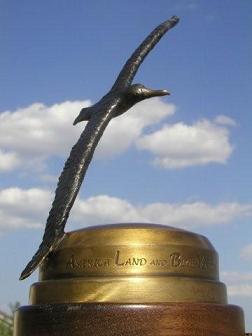


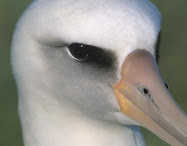
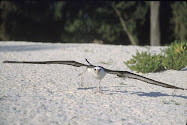

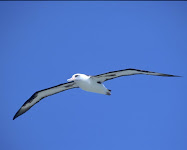
.jpg)
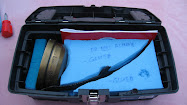.jpg)
.jpg)
.jpg)
.jpg)
.jpg)

.jpg)
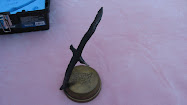.jpg)
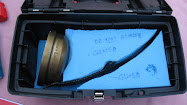.jpg)
.jpg)
.jpg)
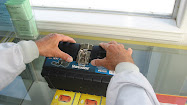.jpg)
.jpg)

.jpg)




